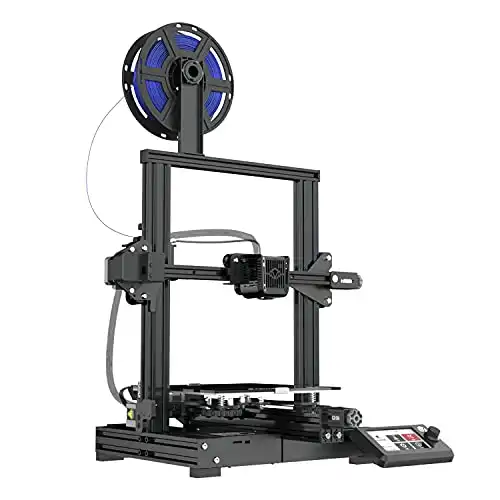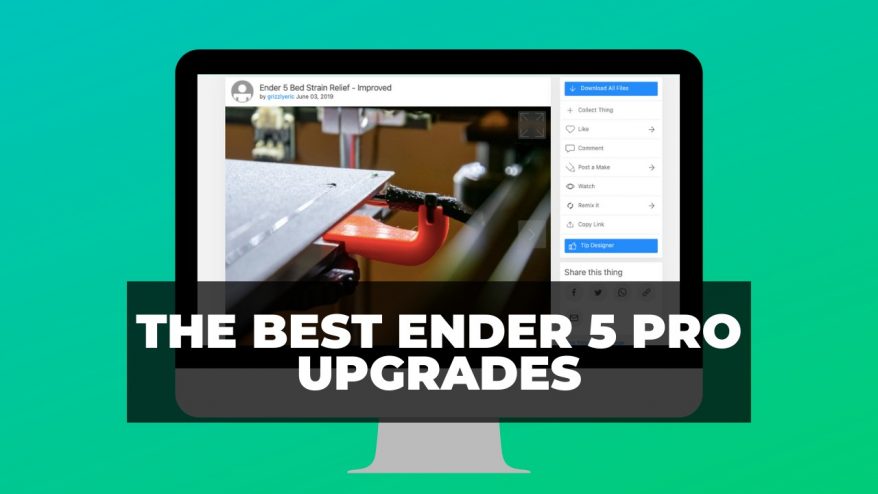
Looking for Ender 3 alternatives? We’ve got you covered.
Ender 3’s wild success is rival manufacturers playing catch up with their own take on the low-cost printer. There are now plenty of viable alternatives if the Ender 3 doesn’t quite have the features you need.
|
|
|
|
$179.00
|
$299
|
|
|
For most users, I’d recommend taking a look at the Biqu B1 first. It has more built-in features compared to the Ender 3, with automatic bed leveling and a touchscreen display making it a more intuitive experience for beginners.
Elsewhere, you might also consider the superior print speed of the Prusa Mini, or the affordable Voxelab Aquila for a budget choice.
I’ll step through all the worthy Ender 3 alternatives I’ve tested, showcasing the best ones currently available at a range of price points and their different features.
Whether you’re looking for a different-flavored Ender 3/Pro/V2-style printer, or an alternative to the latest decked-out Ender 3 S1 Pro, there’s something for everyone here.
Read more: our Ender 3 review
3DSourced is reader-supported. When you buy through links on our site, we may earn an affiliate commission. Learn more
Best Ender 3 Alternatives
Biqu B1
- Price: $279.99
- Build Volume: 235 x 235 x 270 mm
- Filament Compatibility: PLA, ABS, PETG, Flexibles
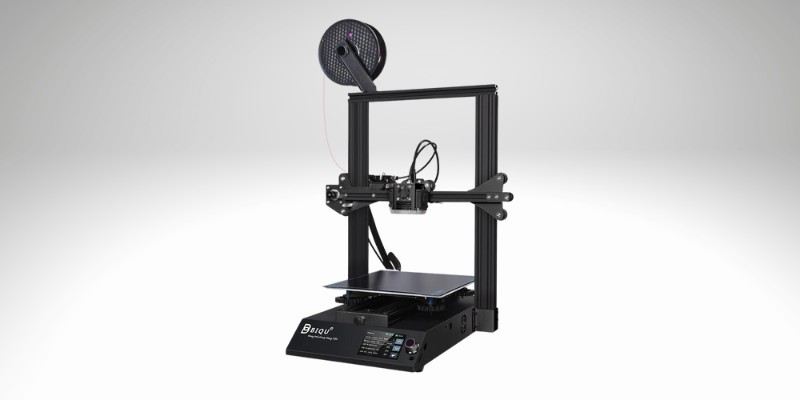
Pros
Bigger build volume than the Ender 3.
Dual-mode interface.
Great possibilities to upgrade and tinker with the printer.
Cons
Lacks automatic bed leveling.
Echoing a running theme among the best Ender 3 alternatives, the Biqu B1 quite simply offers more features than you’d get from Creality’s stable of Ender 3s for the same sum, its most direct competitor in terms of price being the Ender 3 V2.
Among them are a roomier 235 x 235 x 270 mm (outclassing even the Ender 3 S1 in that respect), adjustable belt tensioners, a double-sided magnetic ‘Super Steel Sheet’ bed, a filament sensor, and a resume print function.
The neat, unique dual-mode interface is also worth a mention.
It allows you to hot-swap between Biqu’s sleek, modern touchscreen-controlled interface with a handy model-preview function (unusual for low-cost printers) to a rotary knob-led Marlin UI.
We are also big fans of the upgrade and tinker potential afforded by vacant ports on the SKR board and how accessing the Biqu B1’s innards takes hardly any effort, not something we can say about the Ender 3s without lashings of sarcasm.
Weaving in automatic bed leveling, Wi-Fi connectivity, or a supplementary Z-axis motor should be a doddle.
For us, the Biqu B1 is somewhat of a hidden gem that hasn’t garnered the attention it deserves quite yet. It more than gives the Ender 3 V2 a run for its money and, rather fittingly, costs less.
The Biqu B1 also comes with glitzy RGB LED lighting on the print head, and the printer is available in a color scheme with rather fetching hot pink accents.
Due to the fact it houses a Bowden rather than a direct drive extruder and lacks automatic bed leveling, it doesn’t rival the Ender 3 S1. Creality’s flashiest Ender 3 costs substantially more in any case, so, not a fair comparison.
Prusa Mini
- Price: +$350
- Build Volume: 180 x 180 x 180 mm
- Filament Compatibility: PLA, PETG, ASA, ABS, PC, CPE, PVA/BVOH, PVB, HIPS, PP, Flex, nGen, Nylon, Woodfill
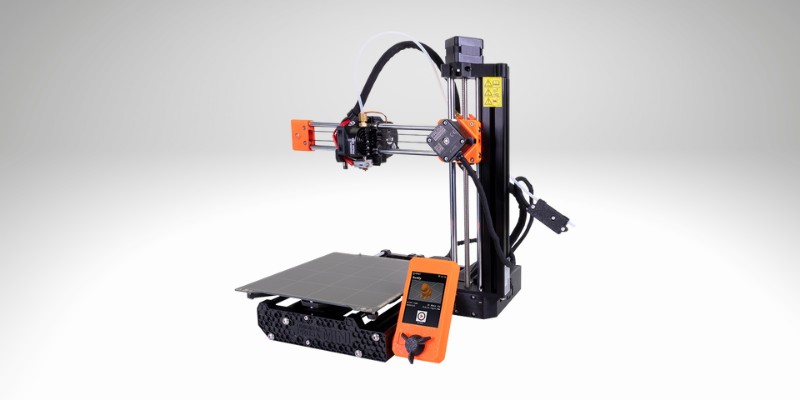
Pros
Reliable and durable, like all Prusa printers.
Fast 200mm/s print speeds.
Cons
Small print area.
Almost adorable with its compact base and signature Prusa orange accents, the Prusa Mini is first and foremost a more wallet-friendly alternative to Prusa’s endlessly-lauded i3 MK3S+ and, by extension, a disruptor in the Ender 3-dominated budget space.
In keeping with Prusa’s history of slapping quality parts on ‘complete’ printers that need little in the way of user-led upgrades, the Prusa Mini is a stellar alternative to the Ender 3 in all the guises.
It’s an option for those that don’t fancy diving into the bowels of their printer on the regular to tinker or upgrade. It’s one for people that want a systematically reliable and solid printing experience every time they fire up their machine.
It just works with no fuss or frustration.
On to features, the Prusa Mini has all the trimmings you’d expect from the folks behind the i3 MK3S+:
- Automatic mesh bed leveling
- Ethernet connectivity
- Sharp color LCD screen with model preview
- SuperPinda homing probe
- PEI-coated magnetic removable bed
When combined, these features see the Prusa Mini storm past the classic Ender 3 trio to compete directly with the Ender 3 S1. Better yet, Prusa asks you to pay $50 less than the S1 to become a happy Mini owner and print with a broader range of compatible filament types.
There is one major compromise: the Prusa Mini’s modest 180 x 180 x 180 mm build volume to the Ender 3 S1’s comparatively spacious 220 x 220 x 270 mm.
Beyond that, there’s little to fault here. The Prusa’s signature quality courses through every layer you’ll print with the Mini.
Read more: our Prusa MINI vs Creality Ender 3 comparison
Voxelab Aquila
- Price: $180.00-$200.00
- Build Volume: 220 x 220 x 250 mm
- Filament Compatibility: PLA, ABS, PETG
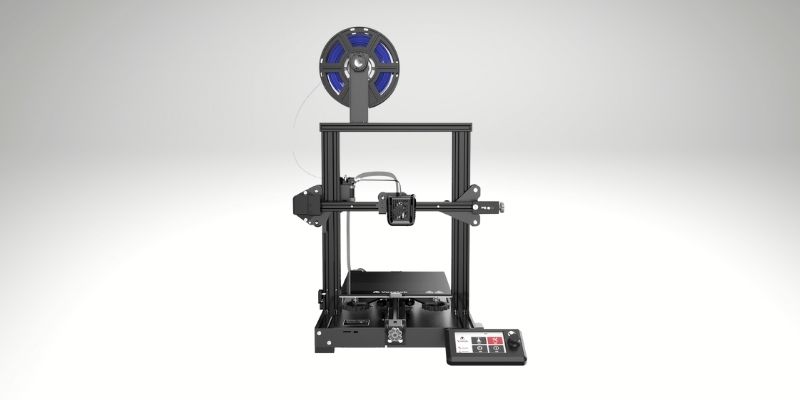
Pros
Cheapest and best-selling 3d printer around.
Good build volume for the price.
Effective for a beginner printing PLA.
Cons
Not as accurate as more expensive printers.
With a price roughly on par with the Ender 3, the Voxelab Aquila is a solid all-around 3D printer designed by 3D printing royalty Flashforge, albeit under the Voxelab budget branding.
It’s another offspring of the Ender 3’s still-rippling impact on the budget 3D printer segment in both shape and design but throws in features you won’t find on Creality’s stock machines.
Leading the charge is a textured carborundum glass bed (similar to the one on the Ender 3 V2), a 32-bit mainboard, a color LCD, a resume print function, XY belt tensioners, and a filament run-out sensor.
Much like the Ender 3, the Aquila offers a solid foundation for upgrades and mods but works well as is. The option is there, though, to spruce it up with automatic bed leveling, for example.
Another way the Aquila diverts from the Ender 3 playbook is simplicity.
It’s easy to use from the get-go, bolstered by a well-designed UI design and the bundled VoxelMaker slicer, a reskin of FlashPrint.
The latter is straightforward and uncomplicated, with just enough functionality not to overwhelm beginners but enough options to hone good quality prints.
While the original Ender 3 once straddled the crossroads between capabilities and price, the Voxelab Aquila certainly makes a strong claim as a direct successor.
We can’t stress how much value you get for under $200, especially as the Voxelab Aquila is more or less equivalent to the more expensive Ender 3 V2 in features and printing experience.
Anycubic Kobra
- Price: $299.00
- Build Volume: 222 x 222 x 252 mm
- Filament Compatibility: PLA, ABS, PETG, TPU
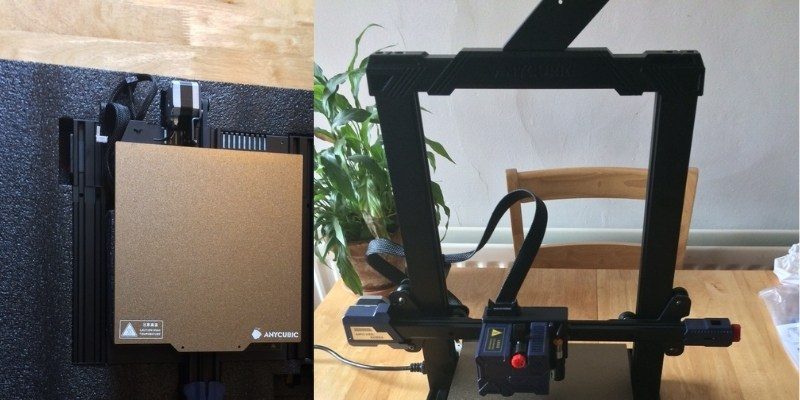
Pros
One of the cheapest 3D printers around with auto-leveling.
Direct drive extruder is ideal for beginners and for printing flexibles.
Excellent performance for the price.
Cons
The build volume is a bit too small.
Smaller max height than Ender 3 S1.
The Anycubic Kobra is the budget entry in Anycubic’s latest new model release flurry.
It’s capable of superb prints for the price and pulls in a blend of convenience-focused features we expect to become a benchmark for competitors moving forward.
We were kindly sent a review model by Anycubic, and despite a bit of wrestling with the software side of things, we were thoroughly impressed with the Kobra.
With a bit of tuning, the quality of the prints is simply outstanding for a low-cost FDM printer.
Getting from packaged parts to a machine ready to print was effortless and, frankly, pleasant. Two months on, we’re still finding new things to like and enjoy about this plucky little printer that punches well above its weight.
At just under $300, The Anycubic Kobra costs more than the base Ender 3, which you’ll likely find for under $200.
However, that extra $100 spent bundles the type of top-shelf features you’d expect on machines with a significantly higher price tag. Sized up against the Ender 3 V2, the Kobra costs roughly the same, has better features, and offers a more rounded experience for the money.
The direct-drive extruder, automatic bed leveling, and a fantastic removable magnetic PEI-coated spring-steel bed allow the Kobra to deliver fuss-free, reliable, user-friendly printing.
You also get a slightly larger 222 x 222 x 252 mm build volume than the original Ender 3 trio. There’s no denying you’re landing far more value than you’d typically expect from a low-cost 3D printer.
As for the Ender 3 S1, the Anycubic Kobra shares many features, but with $100 shaved off the price tag.
You don’t get quite as much vertical build volume to work with, though, a minor trade-off for one of the most appealingly affordable Ender 3 alternatives.
Although it’s still early days, the Kobra has the makings of a DIY darling as it’s begging for community-fashioned mods, tweaks, and upgrades, just like the Ender 3.
Expect a flood of these as shipments start hitting doorsteps in the months ahead.
Why You’d Want To Consider An Alternative to the Ender 3
Despite a firm grip on the most popular 3D printer crown, the Ender 3 is getting a little long in the tooth.
Omitted features that were once minor irritants easily remedied through DIY upgrades have morphed into major downsides.
Creality addressed these to some extent in successor models such as the Ender Pro and Ender 3 V2 with a tempered carborundum glass bed, silent mainboard, and a chunkier Y-axis extrusion but some gaping downsides remain.
The market is now awash with better or similarly equipped alternatives offering a near-identical printing experience at a similar price point, meaning it’s harder to frame the Ender 3 as the go-to budget pick it once was.
These alternatives unabashedly draw inspiration from the Ender 3 but improve or match it in ways that make them better or are at least comparable all-around machines.
It’s harder to make a case for why you should consider an alternative to the latest Ender 3 S1.
The printer is Creality’s most sophisticated Ender 3 yet, boasting a glut of desirable improvements, chiefly automatic bed leveling, a direct drive extruder, a roomier 220 x 220 x 270 mm build volume, and a PC-coated spring steel removable print bed.
An impressive machine, no doubt, and a premier pick in the affordable portion of the 3D printer market.
Nevertheless, the alternatives are worth a gander if you just want something different from the Ender family or need a cheaper machine mostly matching the Ender 3 S1’s feature set.
Articles we recommend:
